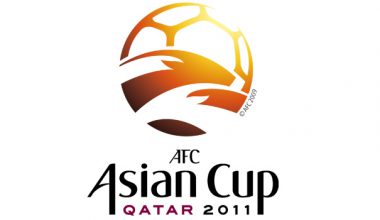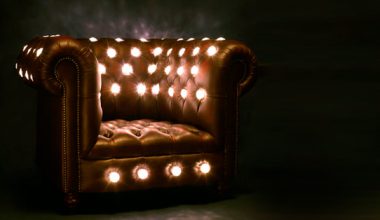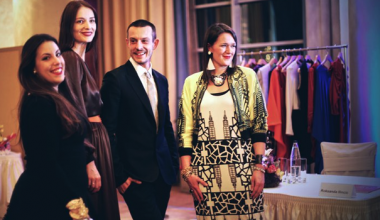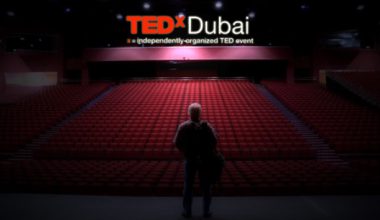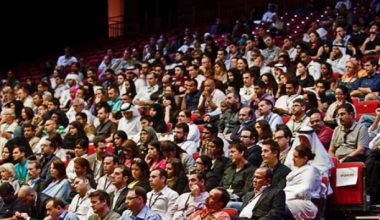
Barrak Alzaid is the Artistic Director at ArteEast. His deep knowledge of the Middle East’s contemporary art stems from his long involvement with the art industry and numerous powerhouse galleries, curators, and artists.
The art world is not a single, isolated entity, but part of other forms of cultural production. Luckily, ArteEast prides itself on having a cohesive vision for Arab art and creativity since they run film fests and also publish the Quarterly, which includes Shahadat, a free online lit webzine.
In this interview, he stresses the existence and creation of ‘linkages’ amongst participants in the Middle East art world. “There’s a need to find collaborations, to find partners, whether it’s an artist trying to find a way to generate new work, find space, or facilitating how institutions can come together to share resources to create something new,” he says.
In Barrak’s own words: “We’re supporting art – not just in cinema and visual art, but also performance and by offering education. We provide a holistic perspective of the region. We also have a very critical take. We don’t start from the presumptions that people have. We surprise people. We try to push people further in their understanding of the region.”
Khaleejesque spoke to Barrak about his outlook on emerging trends shaping the future of Middle Eastern art and discussed ArteEast's upcoming Benefit Auction on September 21st at the Phillips de Pury & Company in Chelsea New York.
Tell us about ArteEast.
ArteEast was founded almost 10 years ago in New York with the aim to support and promote artists from the Middle East, North Africa, Turkey and Iran. We present rigorous, substantive, well-curated programs and plug them into top-notch venues around the world. There’s a range in scale and scope, but the one thing that’s consistent is the quality and rigor.
We’re building a new dynamic online portal to serve as an educational resource and outlet. The idea is to have a clean and robust online platform that acts as that resource for artists, filmmakers, and people interested in art from the region. People can access from the Middle East/North Africa globally. So we’re going to maintain our robust offline programming, but we’re also going to flex more muscle digitally.
Talk to us about your role in ArteEast.
In this curatorial role I have, I support and nurture an environment for critical and creative work to be done. My expertise is in creating the linkages and shining the light on the artists.
I like nurturing projects and cultivating the ideas of these artists. Just listening and being able to travel and see this range of cultural production offers me the bigger picture of 'how does this all fit together'. The art we spotlight will shape how we see the present 5-10 years down the line. As cultural workers we’re cooperating with this effort to create a narrative for contemporary art and art history.

What are the trends that are shaping collector behavior In the Gulf? Who are the thought leaders and influencers?
The boundaries in the Khaleej are porous. You have such a strong sense of familiarity and affinity; people are always talking to each other, everyone knows everyone. There isn’t a lack of education internally. I think there’s a great deal of support. Co-Founder of JAMM, Sheikha Lulu Al-Sabah (who is also a Benefit Committee Member) staged an art auction in Kuwait that featured work by a young Kuwaiti painter, Aziz Al-Mudhaf, and his work sold very well. There is a keen interest, and deep investment to support the work of these aspiring artists.

You have somebody like Sheikh Sultan Saoud Al-Qassemi who crafts a compelling model for collecting, someone who is not only actively engaged with everyday politics and writing, but also has this wonderful collection that he’s developing and a vision for art that he has concretized through his Barjeel Art Foundation. In Bahrain, you have Al-Riwaq Gallery started by Bayan Al-Barak Kanoo. She does public art education alongside her gallery and the exhibitions. She has a really sophisticated eye and take and a passion for bringing it to the Bahraini public.
At the same time, you have to balance that out with satisfying the general public. This is especially important for a commercial gallery. People are not equipped with the tools to access art that isn’t simply painting on the wall. People involved in this world get it, but the general public needs to be brought on-board somehow. And I think it’s going to happen naturally.
You have young collectors who are collecting based on what they like and the people they know. You have others doing it for 20-30 years and who have been doing it long before the Middle East became a center of art and artistic production within the global art market. They go to the international shows, and many of these young Gulf collectors are traveling extensively. Education comes naturally and for each person it’s different. For one person, it might be about spending time with the artist developing a personal relationship. This allows them to take on a role based more on patronage, something that has fallen by the wayside in the west, but I think it could be a really valuable model for us in the Gulf.
In terms of artists, the boundaries being pushed by Fatima Al Qadiri, a New York based composer, musician and artist will be dropping her album Genre-Specific Xperience at the New Museum in October 2011, and Monira Al Qadiri another young Kuwaiti artist with a quite adept visual style. Here in New York Hala Matar, a young Bahraini, has launched a gallery space Chiles Matar that contest the entrenched institutionalization of the art world, and has still managed to bring on board valuable partnerships with the New Museum and Sotheby’s.
You claimed that the auction provides a good cross-section of Middle Eastern art. In what way is it a cross-section and is that something that most exhibits don’t provide?

This auction brings together a collection of works and artists who of an extremely high caliber, and who represent an astonishing cross-section of what’s happening now in contemporary Middle Eastern art.
By working closely with our partners Art Reoriented and Leila Heller Gallery, we are able to draw on their expertise and experience with artists, to offer works that are truly exceptional.
The challenging thing about working on a regional level is that you don’t want to ghettoize. What allows ArteEast to stand out is that we work in an interdisciplinary way. We’re supporting art not simply cinema festivals and visual art exhibitions, but through fiscal sponsorships to artists and public education. We provide a critical and nuanced perspective of the region through art. This auction is yet another example of that – we try to push people further in their understanding of the region. Rather than taking it as a discrete or fixed object, for us the boundaries are very porous and malleable.

Tell me about this new visual language. I’m specifically interested in the Arab Spring. How that opened up new narratives and a whole new way of thinking about the role of technology in the Middle East.
The Arab Spring was special because of the access that people gained through social media tools. There was this seemingly infinite array of images and texts and sound bites that populated Facebook, Twitter and Youtube that people now have access to. These things can be played around with, are tools to be redeployed. There’s this realization and sense of empowerment own these texts.

People are still struggling to understand how to grapple with turning that into work in the art world. ArteEast published an issue of Shahadat, which is our online web publication that contends with contemporary literature and short form literature. We did a bit in March on the signs that were disseminated in Tahrir Square.
We didn’t try to create something new. But rather sift through and synthesize. That’s what a lot of people are doing and if they bring that back into their art practice. One of our goals is to create an open space for criticism and participation.
I attended a notable meeting, at Beirut Art Center in Lebanon this spring. People in the room were heads of cultural institutions based in the Middle East and the conversation revolved around how do we as cultural practitioners, cultural institutions, individuals with access to mechanisms of policy, support our colleagues and our communities in Tunisia, Syria, Egypt and also how do we make sense of these new structures of power? How do we help artists in those areas? How do we support these small initiatives popping up in response to the vacuum that the revolution left? But also and perhaps most importantly, how do we listen carefully and respond in our own institutions back home?
Another issue here is like in Egypt, the government is completely dismantled but there is some remnants of power structures that remain. How do we work with this emerging regime? There is this new-but-old dynamic and we are still making sense of what’s happening.

How are you working to make art more accessible?
We work strategically to make work from the Middle East and North Africa accessible globally. There are a few thresholds to access art.
I want people to feel challenged, to think, and welcome them to think. But I think if people aren’t equipped with the tools and space to think about it, they can actually feel alienated from art. The work won’t have strong significance or resonance for them.
ArteEast works in a very organic and strategic way. With this auction, we’re lucky to be working with some very prominent gallery owners and experienced curators working on Middle Eastern art right now. This expertise is reflected in the auction. We work based on our personal relationships. These people are our friends and colleagues. We have, in a way, grown up with them. There’s this mutual trust and respect and appreciation. We come at this work in the Middle East in different ways, so I think that’s what makes a collaboration like this Benefit Auction very beautiful. We’ve helped to create the platform and audience for it.

What is something to keep in mind when thinking about this ‘big question’ regarding the future of Middle Eastern Art in the next 5-10 years?
The art world in the Middle East is very nimble and we’re very much using the new media tools at our disposal. There are small creative spaces cropping up everywhere, and we’re thinking on a global level, participating in European, Asian, and American festivals and biennials and so on. We are also creating new centers and there’s this intense linkage taking place.
Eventually, there’s going to be a cross-pollination of ideas, techniques, media, it’s going to create a wonderfully dynamic art presence in the next 5 to 10 years.
Bidding online ends on Wednesday AM New York time.Visit auction.arteeast.org to place bids online.
– Plus Aziz
Images courtesy of ArteEast


